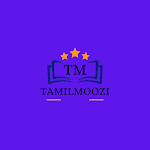• English education, introduced with the object of
producing clerks, also produced a new English-educated
middle class.
• This class came under the influence of western ideas and
thoughts.
• Christianity also had its effect on the newly emerging
middle class.
• Though small in number, the educated middle class
began to take a lead in political as well as in reform
movements.
• The Indian reformers were, however, quite hesitant to
subject their old notions and habits to critical scrutiny.
• Instead they attempted to harmonize both Indian and
Western cultures. Their ideas and their actions helped to
mitigate social evils such as sati, female infanticide, an
• The reform movements of nineteenth
century in the realm of religion fall under
two broad categories: reformist
movements like the Brahmo Samaj, the
Prarthana Samaj and the Aligarh
Movement; and the revivalist movements
such as the Arya Samaj, the Ramakrishna
Mission and the Deoband Movement.
• There were also attempts to challenge the
oppressive social structure by Jyotiba
Phule in Pune, Narayana Guru and
Ayyankali in Kerala and Ramalinga Adigal,
and Iyothee Thassar of Tamil Nadu.
• Rammohan Roy (1772–1833) was one of the earlier reformers influenced by
the Western ideas to initiate reforms.
• He was a great scholar, well-versed in Sanskrit, Arabic, Persian, and English
apart from his knowledge in his mother tongue, Bengali.
• Rammohan Roy was opposed to meaningless religious ceremonies and all
forms of pernicious social customs.
• Yet he wanted to preserve continuity with the past.
• Debendranath was a moderate reformer.
• But his younger colleagues in the Sabha were for rapid
changes.
• The greatest of these, Keshab Chandra Sen, (1838–84)
joined the movement in 1857.
• But in 1866 a split occurred in the ranks of Brahmo Samaj.
Keshab left the Samaj and founded a new organization.
• Debendranath’s organization, thereafter, came to be
known as Adi Brahmo Samaj.
• In his religio–philosophical social outlook, he was deeply influenced by
monotheism and anti-idolatry.
• Based on his interpretation of the Upanishads, he argued that all the
ancient texts of the Hindus preached monotheism or worship of one God.
• Rammohan Roy condemned the
subjugation of women and opposed
the prevailing ideas that women were
inferior to men.
• He strongly advocated education for
women.
• He gave his full support for the
introduction of English language and
western sciences in schools and
colleges.







0 கருத்துகள்